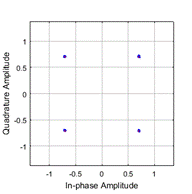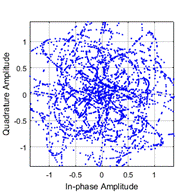MIMO-ISS Waveform System
The MIMO-ISS Waveform System is a “non-linear” digital communications, modulator-demodulator (i.e. modem) waveform system. The architecture of this “non-linear” modem system is realized with a system referred to as the Intermodulation Spread Spectrum (ISS) System.
Intermodulation Spread Spectrum (ISS) System
The Intermodulation Spread Spectrum (ISS) system is composed of three basic modem subsystems. These modem subsystems are the following:
- IWSK Subsystem:
- CIMA Subsystem:
- MDSM Subsystem:
Intermodulation Waveform Shift Keying (IWSK) provides the User Data Transport Layer. |
Coded Intermodulation Multiple Access (CIMA) provides the Code Division Multiple Access (CDMA) Layer. |
Multi-Dimensional Symbol Multiplexing (MDSM) provides the Digital Waveform Symbol Mapping Layer. |
Intermodulation Spread Spectrum is a highly non-linear mathematical system. Details of the ISS non-linearity concepts are presented below.
The Multiple-Input, Multiple-Output Intermodulation Spread Spectrum (MIMO-ISS) Waveform System is a new class of digital waveform system.






